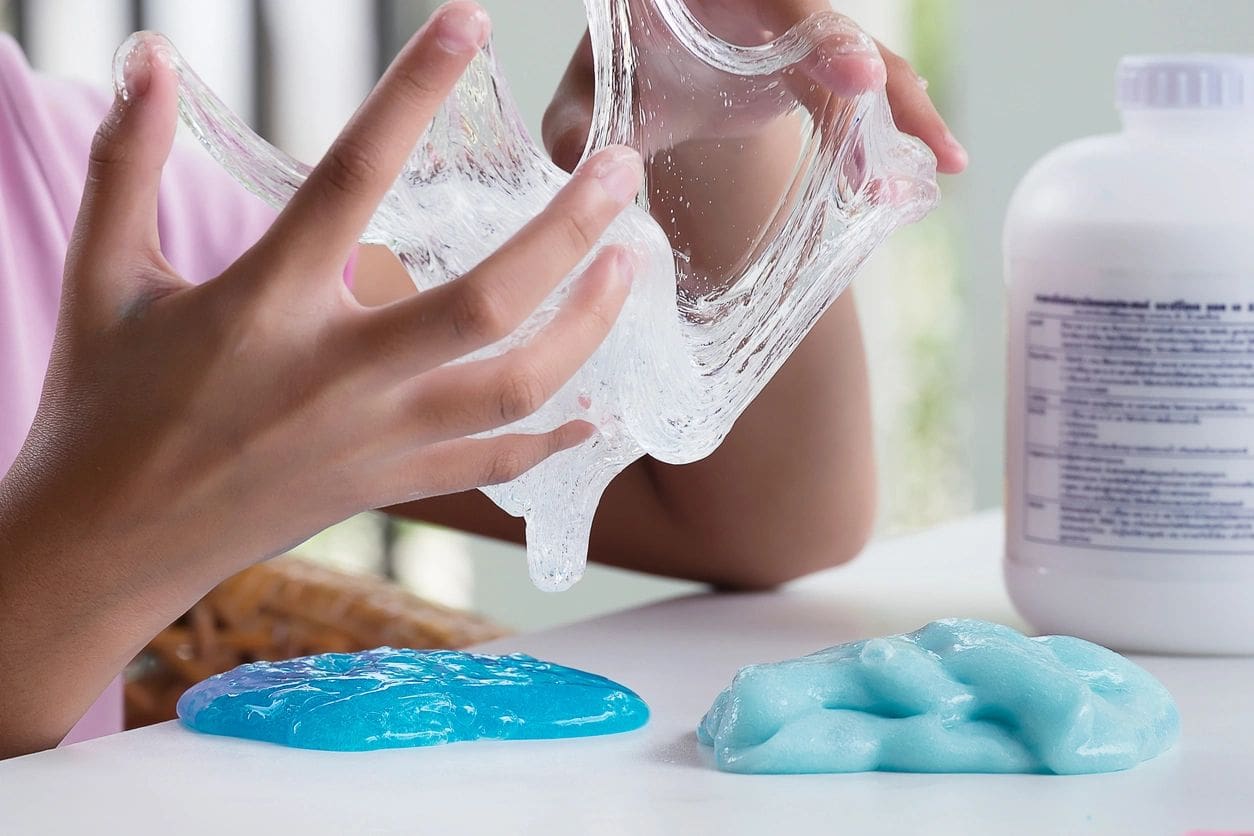Sticky Fingers and a Little Chaos!! Why Slime?! And Why Messy, Hands-On Play Still Matters

Beth Patane, Art Therapist LCAT
Have you noticed how different school supplies look today?
Elmer’s liquid glue has been replaced with glue sticks. Paintbrushes and water cups? Gone. Now it’s quick-dry paint sticks. Cutting activities with scissors? Swapped for peel-and-stick foam shapes. Even handwriting and tracing are being phased out in favor of typing. Everything is faster, cleaner, and easier — but are our kids missing something important?
Yes. They’re missing hands-on experiences that support real development.
All those “old-school” art supplies did more than keep us busy — they helped build:
- Fine motor strength
- Two-hand coordination
- Planning and sequencing skills
- Frustration tolerance and perseverance
- Sensory regulation
- Creative problem-solving
Today’s convenience-focused tools remove the process and focus only on the product. And that’s a big deal.
We’re seeing kids who:
- Can’t use scissors effectively
- Use paper towels instead of rinsing paintbrushes
- Overuse glue and paint because they’ve never been taught to measure or conserve
- Toss out an entire canvas if it doesn’t come out “right” on the first try
They haven’t had the chance to build patience — or the resilience that comes from starting over.
This kind of process-focused learning is especially beneficial for neurodivergent children, who often thrive when given the opportunity to explore materials with their hands and use sensory experiences to self-regulate and engage.
And this is why slime is more than just a trend — it’s a tool.
Slime is today’s version of pouring Elmer’s glue on your hands and peeling it off. It’s not just sensory fun — it’s essential sensory input. Slime helps kids get comfortable with texture, practice hand strength and dexterity, and stay engaged without the pressure of “making something perfect.” For many kids, especially those with sensory sensitivities or attention challenges, it can be a game-changer.
Try it at home:
- Mix cornstarch and water for a quick sensory experience
- Let your child make homemade slime with glitter, food coloring, or foam beads
- Encourage the use of glue bottles, scissors, paintbrushes, and canvas — even if it gets messy
Let them make mistakes. Let them explore. Let them learn the steps.
Because learning how to paint, cut, mix, and stick teaches kids far more than how to make art — it teaches them how to navigate the world.
Because sometimes the best learning comes with sticky fingers and a little chaos.
